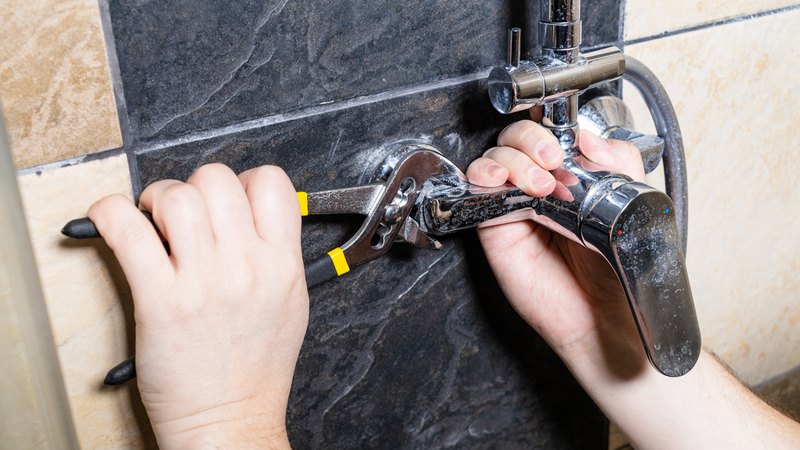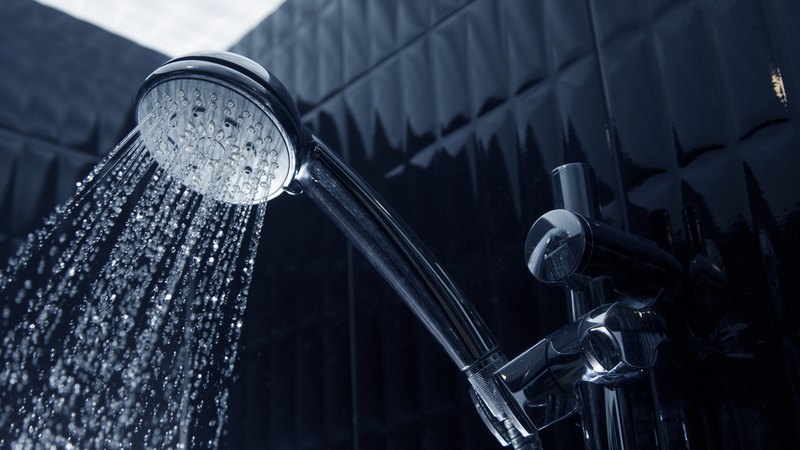
Essential Tools and Techniques: How to Fix a Shower Diverter?
We explain why your shower diverter might be stuck and how to free it, what causes leaks and how to stop them, and why your water pressure might be weak and how to boost it.
When you're stepping into the shower after a long day, the last thing you want is to be greeted by a malfunctioning shower diverter. But what is a shower diverter? This small yet essential component directs water flow between the bathtub faucet and the showerhead, ensuring you get the perfect shower experience. In this article, we'll delve into the common problems you might encounter with your shower diverter and how to fix them. Plus, we'll highlight some tips from experienced Austin plumbers who have tackled these issues time and time again.
Why Is My Shower Diverter Not Working?
Shower diverters, like any other plumbing component, are susceptible to a range of issues over time. From wear and tear to mineral buildup, various factors can be a reason why your shower diverter is not working. In this section, we'll explore some of the most common problems homeowners face with their shower diverters. Understanding these issues can help you identify and address them promptly, ensuring your shower remains a place of relaxation and comfort. Whether it's a stuck diverter, a pesky leak, weak water pressure, or inconsistent water temperature, knowing “How does a shower diverter work?” can save you time, money, and frustration. Let's dive into these common problems and see how to fix the shower faucet diverter.
Stuck Shower Diverter
One of the most common problems is a shower diverter that gets stuck in one position. This can happen due to mineral buildup from hard water or simply because of wear and tear over time. When the shower diverter is not fully diverting, it may prevent water from flowing to the showerhead or make it difficult to switch back to the bathtub faucet.
Leaking Shower Diverter
A leaking shower diverter can be frustrating and wasteful. This issue often arises from worn-out washers or seals inside the diverter valve. When these components deteriorate, water can seep through, causing the shower diverter to leak even when it is in the off position.
Weak Water Pressure
Another common issue is weak water pressure when the diverter is engaged. This can result from partial blockages in the diverter valve or mineral deposits clogging the showerhead. In some cases, the shower diverter may be partially broken, leading to reduced water flow.
Inconsistent Water Temperature
If you have already checked all the reasons described earlier and are still thinking, “Why is my shower diverter not working?” this may be the reason. Inconsistent water temperatures can occur if the diverter is not properly balanced or if there is an issue with the mixing valve. This problem can make your showering experience less comfortable and more challenging to manage.
How to Fix a Broken Shower Diverter?

Dealing with a malfunctioning shower diverter can be frustrating, but the good news is that many common problems have straightforward solutions. In this section, we'll guide you through practical steps about how to fix a shower diverter pull-up. Whether you're a DIY enthusiast or prefer to call in a professional, these tips can help you restore your shower's functionality. From cleaning to replacing the shower diverter or adjusting the mixing valve for consistent water temperature, we'll cover a range of fixes.
Cleaning the Diverter
If your shower head diverter is not working, try cleaning it first. Remove the diverter handle and clean up any visible debris or mineral buildup. Soaking the diverter in vinegar can help dissolve mineral deposits. Once cleaned, reassemble the diverter and test its functionality.
Replacing the Washers or Seals
For leaking diverters, replacing the washers or seals inside the diverter valve can often solve the problem. Turn off the water supply, disassemble the diverter, and inspect the washers and seals. If the valve is worn out or damaged, replace the faulty diverter valve in a shower with a new one from a hardware store.
Checking for Blockages
If your shower diverter is not working properly, check for blockages in the diverter valve and the showerhead. Remove the showerhead and soak it in vinegar to remove mineral deposits. Inspect the diverter valve for any obstructions and clear them if necessary.
Adjusting or Replacing the Mixing Valve
For inconsistent water temperature, you may need a shower diverter valve replacement. This can be a more complex repair, so consulting a professional plumber is often recommended. They can accurately diagnose the issue and make the necessary adjustments or replace the shower diverter valve.
Replacing a Shower Diverter
Wondering “How to replace the shower diverter?” To remove a diverter, start by turning off the water supply. Then you must take off the diverter, but how to remove the shower diverter? Pull off the diverter handle using a screwdriver, then unscrew the old diverter with an adjustable wrench. Clean the threads of the pipe to remove any debris, then wrap the new diverter's threads with the plumber’s tape. Screw the new diverter into place and secure it with the wrench, ensuring it does not over-tighten. Test the new diverter for proper function and check for leaks, tightening connections if necessary. So, now that you know how to fix a broken shower diverter, and can enjoy the hot water.
Repair Shower Diverter In the Nick of Time!

Knowing “How to repair a shower diverter?” can significantly improve your showering experience. While some shower repairs are simple and can be done on your own, others may require professional assistance. That's where Austin Area Plumbing comes in. As a family, veteran, and woman-owned business, we take pride in offering top-notch plumbing services and telling you how to fix the shower diverter in the wall.
We understand that large plumbing jobs can be daunting, which is why we offer financing options to make the process easier for you. Trust our experienced team to handle all your plumbing needs and ensure your shower diverter is in perfect working condition.
Contact us today to schedule a consultation and repair the shower diverter!
FAQ: Broken Shower Diverter Issues
1. How do I know if my shower diverter valve is bad?
If the water flow doesn't fully switch from the bathtub faucet to the shower head, or if it's stuck in one position, your diverter might be malfunctioning. If water leaks from the spout while the shower is running, your diverter valve needs attention.
2. What is a common diverter valve issue?
A common issue with diverter valves is getting stuck due to mineral buildup or wear and tear over time. This can prevent the diverter from properly switching the water flow between the tub and the shower head. Another frequent problem is leaking.
3. How much does it cost to replace a shower diverter?
On average, you can expect to pay between $50 and $150 for the parts. If you hire a professional plumber, labor costs can add another $100 to $250, bringing the total replacement cost to approximately $150 to $400.
4. Can a broken shower diverter cause a leak?
Yes, a broken shower diverter can cause a leak. If the diverter valve is damaged or worn out, it may not seal properly, allowing water to leak from the spout or the shower head even when the diverter is in the off position.
Contact Us Today!

Latest News and Useful Tips from Austin Area Plumbing
Discover the pros and cons of tankless vs. traditional water heaters. Learn which option is energy-efficient, cost-saving, and best for your home needs.
Explore key qualities to look for in water heater installation companies. Ensure optimal performance and reliability for your home's hot water needs with expert insights and tips.
Don't let this annoying noise disrupt your day. Our professional plumbers are ready to diagnose and fix the issue quickly. Call and get your toilet running quietly again!